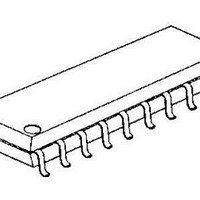NJM3717E2 NJR, NJM3717E2 Datasheet - Page 8

NJM3717E2
Manufacturer Part Number
NJM3717E2
Description
Motor / Motion / Ignition Controllers & Drivers Stepping Motor Driver
Manufacturer
NJR
Type
Stepper Motor Controller/Driverr
Datasheet
1.NJM3717D2.pdf
(10 pages)
Specifications of NJM3717E2
Product
Stepper Motor Controllers / Drivers
Operating Supply Voltage
4.75 V to 5.25 V
Supply Current
25 mA
Mounting Style
SMD/SMT
Package / Case
EMP-20
Operating Temperature
- 40 C to + 150 C
Lead Free Status / Rohs Status
Lead free / RoHS Compliant
Available stocks
Company
Part Number
Manufacturer
Quantity
Price
Part Number:
NJM3717E2
Manufacturer:
JRC
Quantity:
20 000
Motor selection
Some stepper motors are not designed for continuous operation at maximum current. As the circuit drives a con-
stant current through the motor, its temperature can increase, both at low- and high-speed operation.
Interference
As the circuit operates with switched-mode current regulation, interference-generation problems can arise in some
applications. A good measure is then to decouple the circuit with a 0.1 F ceramic capacitor, located near the
package across the power line V
close to the circuit.
leads connecting R
printed circuit board directly to the terminal connector. The motor wires should be twisted in pairs, each phase
separately, when installing the motor system.
Unused inputs
Unused inputs should be connected to proper voltage levels in order to obtain the highest possible noise immunity.
Ramping
A stepper motor is a synchronous motor and does not change its speed due to load variations. This means that the
torque of the motor must be large enough to match the combined inertia of the motor and load for all operation
modes. At speed changes, the requires torque increases by the square, and the required power by the cube of the
speed change. Ramping, i.e., controlled acceleration or deceleration must then be considered to avoid motor pull-
out.
V
tive transients from being generated by the motor.
CC
Some stepper motors have such high core losses that they are not suited for switched-mode operation.
Also make sure that the V
The ground leads between R
In order to minimize electromagnetic interference, it is recommended to route M
The supply voltages, V
Before a driver circuit board is removed from its system, all supply voltages must be turned off to avoid destruc-
Applications Information
, V
MM
Figure 8. Typical stepper motor driver application with NJM3717
S
and R
CC
C
and V
R
to pin 16 and pin 10 respectively.
input is sufficiently decoupled. An electrolytic capacitor should be used in the +5 V rail,
S
, C
MM
MM
C
and ground.
Phase
Phase
, can be turned on or off in any order. Normal dV/dt values are assumed.
and circuit GND should be kept as short as possible. This applies also to the
I
I
I
I
1A
0A
1B
0B
A
B
V
V
820 pF
820 pF
CC
CC
56 k
56 k
8
7
9
8
7
9
(+5 V)
(+5 V)
Phase
I
I
Phase
I
I
T
T
1
0
1
0
2
2
NJM3717
GND
GND
V
V
NJM3717
R
R
11
11
4, 5
12, 13
4, 5
12, 13
V
V
CC
C
CC
C
6
6
10
10
820 pF
820 pF
1 k
1 k
V
V
MM
MM
3, 14
3, 14
E
E
V
M
M
V
M
M
16
16
B
A
B
A
MM
1
MM
1
15
15
1
1
STEPPER
MOTOR
A
and M
B
leads in parallel on the
NJM3717


















